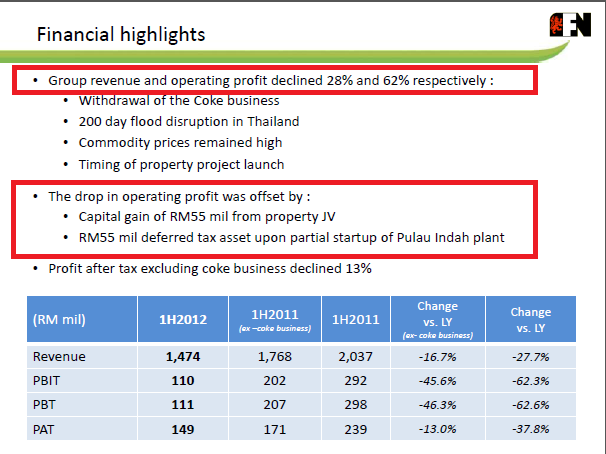Note: Yes, we may not realise it but it takes a whole lot effort to bring people up to a hill to gamble despite the license, especially the early days!
Now, that man has passed and after transferring his businesses to the second and third generations a decade ago, there are several calls made by his children and grandchildren that let us want to have the same believe, but could we? First, there was this "boo boo" of building one of the largest fleet of cruise liners in the world which caused them to lose billions until today. Then came other project such as the gaming business in UK where until today and after 5 years they could not justify the viability of the purchase to investors.
To top off with that, the humble man's son (who is now the Chairman) pays himself RM113 million last year to top the CEO's remuneration ranking far wide from any other CEOs in Malaysia. That figure was exactly 4% Genting's total profit attributable to shareholders. Is that justified?
Yes, he has done one big right decision which is the gaming business in Singapore but that story is going stale. Why is that?
Just read the below first quarter 2012 announcement:
"The (Genting) Group registered total revenue of RM4,421.1 million compared with RM4,889.2 million in the previous year’s corresponding quarter (“1Q2011”), a decrease of 10%. Lower revenue was recorded from all the business segments except for the Property Division. The Group’s profit before tax decreased by 23% to RM1,456.9 million compared with RM1,890.6 million in 1Q2011."
Why am I saying that Genting's performance is appalling. Against its only other competitor in Singapore, it could not better that competitor. Compare Sands performance (announced below) against Genting, what to you managed to decipher? Sands' performance up, Genting's performance down. In a land of duopoly, how is that happening? This is on top of Sands was at its most bruised period after the US crisis. Imagine when the other large gaming companies managed to pull out of their doldrums especially when Las Vegas manages to find its footing, how will Genting compete, I wonder? Remember, casino business is global, not local especially in the era of vast international travelling.
Sands first quarter 2012 performance
"Las Vegas Sands experienced a strong performance from its domestic resorts and in Singapore, where casino revenue increased 51 percent to $701.3 million in the quarter. The Marina Bay Sands there averaged 98 percent occupancy at $341 a night, the company said."
If Genting cannot better Sands in Asia, I am wondering how is it going to better many more competitors in US (New York and Miami to be exact) where it is venturing billions into right now? Yes, it is trying to pull itself into becoming a behemoth in the gaming business globally. But their many failures more recently, are pulling sceptics on how well they can compete.
-------------------------------------------------------------------------------------------------
Then, I am reading another story of the third generation of Genting (supposedly to be the potential next in line). Let me point you to one story of him buying into Catcha Media. (Look at where Catcha is now!) Shareholders, how are you to entrust your money on this new gen of Genting if they can't get decisions right by buying into a "so-so" small media company? Or is this new gen more interested in allowing a run on the Catcha stock as that was what happened during his purchase?














